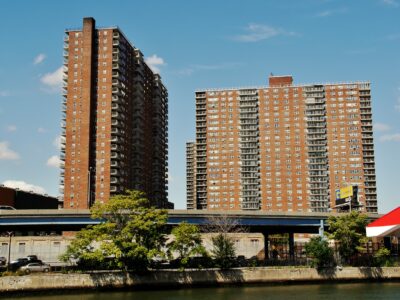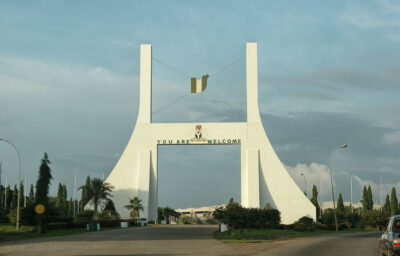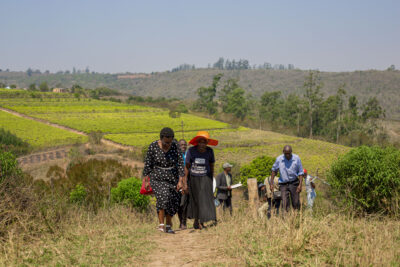In the United States, the study of inequality has long been closely linked to the social geography of the city. For over a century, divisions of class, ethnic background, and race have given rise to distinctive spatial politics, first across neighborhoods; later, spanning the jurisdictional boundaries that segmented metropolitan America. In this memo, I briefly outline the older set of issues surrounding city/suburban divides in the United States and then turn to consider the new questions raised by the reorganization of people and place that has muddied this picture over the past twenty years. I conclude with a series of broader considerations about strategies for studying the politics of inequality and urban space.
Studying the city suburban divide
Postwar concern about metropolitan boundaries reprised an old theme in American politics. Progressive reformers criticized the city-suburban division of public authority in the early years of the twentieth century. But it was not until the racialization of these boundaries became apparent in the 1960s that they attracted intense political and scholarly attention. Jurisdictional boundaries became the key mechanism for segmenting populations by race and (to a less well-considered extent) income. Four literatures address the divided metropolis – some with more attention to politics than others.
The first literature tracks the emergence of the divided metropolis – the process of suburbanization and the accompanying transformation of the white working class into middle class. Historians and political scientists have analyzed the politics and policies used to produce the divided metropolis in broad literatures on federal housing and highway policies and on the local policy tools of income and racial separation, including zoning and municipal incorporation (Burns 1994; Miller 1981; Jackson 1985; Self 2005). This robust literature, enriched by a wave of historical studies in the past ten years, highlights the political role of real estate interests, white racist political attitudes, and politicians of all stripes in promoting the spatial segregation of groups by race.
A second smaller body of work examines the politics of the white suburbs. Eric Oliver’s analysis of suburban politics suggests a kind of anti-politics in which racial and income homogeneity largely obviates the need for political engagement (Oliver 2001). Perhaps most salient has been work on the aversion of suburban homeowners to taxes, as presented in Fischel’s “home-voter” hypothesis (Fischel 2005) This view of suburban politics also feeds into studies of the tax payer revolt that began in the 1970s.
The third – now massive – literature focuses on the black urban poor. Early literature that examined the implementation of the War on Poverty and urban riots of the 1960s put politics at the center of analysis. The challenges that African American exclusion posed to prevailing pluralist interpretations of politics and the revival of attention to urban social movements invigorated and broadened political studies of the city and the place of poor African Americans in it (Greenstone and Peterson 1976; Katznelson 1981). Studies of bottom-up activism have not disappeared altogether – work on the community reinvestment act, organizing networks such as the Industrial Areas Foundation, and community benefits agreements – continue this tradition but this work does not add up to a broader narrative about the politics of spatial inequalities (Warren 2001; Weir 1999).
By the 1970s, a new focus on the city as “hollow prize” prefigured the demise of the political study of urban inequalities. The politics of federal urban policy has received little attention since the 1980s when Reagan slashed place-focused policies. Work on “the urban underclass,” while highly political in its impact, reaffirmed the behavioral and individual approach to studying poverty that took hold in the 1960s (O’Connor 1999). By contrast, the large body of work examining neighborhood effects (of concentrated poverty) rejected the individual focus in favor of a more ecological approach. Even so, this work restricts its attention to the neighborhood and pays very little attention to the role of politics in creating and sustaining neighborhood conditions(Sampson 2012). Politically-oriented studies of the politics of policies related to urban poverty have not disappeared, but they have largely focused on three policies: welfare reform, public housing, and schooling (Hyra 2008; Soss et al. 2011). Some studies of health care, transportation, and social services document spatial inequalities related to these policies but do not examine the politics that produced these outcomes (Allard 2008; Raphael et al. 2001). Studies of the way these policies work together in place to produce spatial inequalities are rare, as are efforts to identify common political forces operating across policies (apart from “neoliberalism” about which I say more below).
The final literature, examining metropolitan regionalism, has a long lineage, with three distinct “waves” over the past century (Brenner 2002; Dreier, Mollenkopf, and Swanstrom 2004). The most recent wave, launched in the 1990s, argued that reducing the salience of local boundaries would lessen spatial inequalities. Much of this literature ended up arguing for and focusing on voluntary processes of collaboration and the creation of new venues for that collaboration to take place (Katz and Bradley 2013). Some of this work has focused on efforts to create political movements for “equity regionalism,” an idea particularly associated with the NGO PolicyLink. Yet, the work on collaboration had little to say about equity and the few studies of regional movements emphasized the political difficulties they confronted and their use of select tools such as community benefits agreements (Pastor, Benner, and Matsuoka 2009). As Alan Altschuler (1999) pointed out over a decade ago, regional cooperation emerges in policy domains that do not involve redistribution.
Apart from the decline in political approaches to studying spatial inequalities, two features of this literature are worth noting. One is the relative inattention to cities of the sunbelt, areas of population growth and poverty growth in America. A handful of studies document the historical development of sunbelt cities (Bridges 1997) but we need to know much more about how processes of spatial segregation work in these cities. Two decades ago, David Rusk (2013) revived older arguments for metropolitan consolidation by contrasting “inelastic” to “elastic” cities. Elastic sunbelt cities that could capture suburban growth within their boundaries, he showed, exhibited less racial segregation and less concentrated poverty than their fragmented counterparts. In some ways, time has caught up with his argument, as enormous cities such as Houston and Phoenix have experienced white flight and the formation of incorporated suburbs on their periphery, curbing the annexation strategy. Even so, Rusk’s argument that spatial segregation operates differently in these vast cities deserves further study. The divisions of political authority in the Sunbelt vary from those of more-studied northern and midwestern metros. Large unincorporated areas, the ubiquity of homeowners associations as quasi-governments, and county-wide school districts all alter the politics of spatial inequalities in ways that we need to understand more fully.
Finally, despite my use of the term spatial inequalities above, most of the work on US metros has, in fact, focused on the African American urban poor. Indeed, since the 1980s and 90s, work on both the “urban underclass,” and on “concentration effects” has devoted attention to an even more narrow slice of the poor.
Inequality and the new social geography
The portrait of the poor black city versus the middle class white suburb was always a caricature, but during the last twenty years, it has become clear that this picture no longer describes metropolitan America. Spatial shifts, including urban gentrification, large scale immigration to cities and suburbs, and the growth of suburban poverty, have significantly altered the older pattern.
These spatial shifts have coincided with growing inequality, which itself has been characterized in different ways. Much work focuses on the top one-percent; other studies highlight the educated top-20 percent; others call attention to the plight of the bottom third (Hacker and Pierson 2011; Noah 2012). The growing work on inequality makes occasional reference to spatial correlates, although it rarely mentions politics. For example, Noah’s overview of the inequality debate indicates that the educated twenty percent live in the same suburban neighborhoods and marry one another, potentially creating a closed upper middle class. In recent work specifically examining spatial income inequalities, Reardon and Bischoff show that spatial inequalities are growing due to the increasing segregation of the wealthy (Reardon and Bischoff 2011).
A growing body of research has documented the new spatial patterns but few studies examine the political implications. Work citing the impact of neo-liberalism on cities does take a political approach to understanding changes in urban space (Brenner and Theodore 2002; Wacquant 2013; Hackworth 2007). Studies in this tradition point to the replacement of the state with market mechanisms (although highlight the state’s penal sanctions in poor communities), considering the consequences for the poor (especially displacement). However, the broad brush approach devotes little attention to the specificity of politics. It provides few levers for understanding variation across different kinds of places, within different policy areas, or different types of low-income communities (e.g. immigrant vs African American). Nor does it offer much purchase on the political implications of distinct patternings of income/racial-ethnic groups across urban space.
Some of the specifically political questions posed by inequality and the reorganization of urban space include:
Suburbanization of poverty. There is much variation in the distribution of low-income people across suburban areas. Some are in extremely poor inner suburbs that have few fiscal resources or political capabilities; they may also be far from the centers of economic activity (e.g. southern suburbs of Chicago and Atlanta). Others are scattered across middle-income suburban areas, especially suburbs that built some multi-family housing in the 1970s (e.g. Gwinnett county, GA). Still others are located in exurban towns or declining cities (e.g. Antioch, CA; Waukegan, IL). The organization of public authority across these spaces is fragmented but the pattern of fragmentation varies by metropolitan area (and state rules), as well as by policy area.
This dispersed geography highlights the difficulty of building a politics around suburban poverty. Moreover, because many suburban areas lack the organized politics and organized groups found in many cities, questions emerge about how the poor can be mobilized and how the interests of the poor can be represented (Weir 2011). To what extent can racial/ethnic/immigrant solidarities (perhaps spanning city-suburban boundaries) help build political capacities to mobilize and represent the poor? Are there nonprofit organizations that can play this role or are these organizations mainly concerned with service delivery? The invisibility of suburban poverty magnifies problems of political mobilization and representation. In many suburbs, growing poverty only becomes visible when social service organizations and philanthropy work to highlight the emergence of new needs (Reckhow and Weir 2012; Kneebone and Berube 2013).
In what ways does the increased presence of the poor in suburbs present new opportunities for upward mobility? Depending on the organization of public authority, the suburban poor may benefit from better services (this was part of the argument in favor of deconcentrating the poor.) For, example, when low income students attend middle class suburban schools, they are more likely to improve their academic achievement (Kahlenberg 2003). Yet, as suburbs become more economically and socially diverse, there is some evidence that they create new mechanisms of separation – e.g. newly incorporated cities (e.g. Sandy Springs, GA) or the erosion of county-wide school systems with charter schools. The beneficial mixing that exists in some suburbs may be temporary as even exurban areas experience white flight.
Poverty vs. Inequality What would it mean to shift the research focus away from the very poor to the poor and near poor? Some recent studies of inequality have highlighted the bottom-third (Newman and Chen 2007; Murray 2013). This broader focus presents the possibilities of moving away from the behavioral assumptions about poverty (although not Murray) that have driven politics toward more structural and institutional approaches to poverty. Yet, the diverse spatial location of the bottom third and, as a consequence, the diverse public institutions this group relies on, places obstacles in the way of a unified politics. Even so, a de-emphasis on the notion that poverty equals the “black urban ghetto” (thus despacializing the politics of poverty) raises new possibilities for identifying common problems (e.g. poorly funded schools, inadequate transit).
As the broad postwar middle class is thinned out, how has the organization of urban/suburban space adapted? The foreclosure crisis suggests that it did not adapt, as builders continued to construct suburban housing developments that, without predatory loans, were out of reach for the aspiring middle class. What politics will/is emerging around the needs of the lower middle classes (perhaps the top of the bottom third) and how will this influence the distribution of income categories across space?
New Juxtapositions of the very wealthy and very poor – How common are new juxtapositions of extreme wealth and extreme poverty? Some aspects of these juxtapositions have been investigated in gentrification research, especially studies of HOPE VI public housing policies. These studies, however, largely document the displacement of the very poor (mitigated in New York by distinctive public housing policies) (Hyra 2008; Vale 2013). Other studies of gentrification examine the relationship of middle class gentrifiers with the poor (Pattillo 2008). In any case, new juxtapositions raise questions about the durability of territorially-based politics that represents low-income residents. Marwell’s (2009) machine-Community-Based Organization may be a precarious institution in this context.
Impact of the recession – The local impact of the recession is still playing out. Even so, it is already apparent that it has accelerated in some cases, and dampened in others, spatial shifts among different populations. What has happened to neighborhoods of the aspiring middle class in the aftermath of the recession?
Broad considerations
Studying Multi-level processes. What is the appropriate venue for studying the politics of inequality in urban space? The politics are clearly multi-level and vary by policy area. How can research best take this complexity into account?
Intersections of Inequality, Social Policy, and Urban Space. How does the organization of policies that offer security and opportunity exacerbate or mitigate inequalities? What efforts have sought to adapt these policies to the new spatial patterns? Access to benefits often depends on institutional decisions that are influenced by spatial patterns of inequality. For example, as lower-income residents concentrate in some parts of the metro region and wealthier people in other areas, hospitals have left poorer areas in search of better “payer mixes.” The Affordable Care Act may alter this dynamic but the persistence of Medicaid suggests that it will not disappear.
Moreover, great concentrations of wealth may be altering institutions that once served the urban poor. For example, academic medical centers that have traditionally served the poor as part of their teaching responsibilities have been reorienting themselves to serve global elites, seeking to shed responsibility for low-income patients.
Fruitful comparisons. The US is usually compared with rich democracies in Europe, although city-level comparisons of politics face challenges in accounting for the differences in national political rules. The high levels of inequality that now place the US in the category of Brazil and China suggest new types of comparisons with the developing world, particularly about the politics of the very rich and the very poor.
References
Allard, Scott W. 2008. Out of Reach: Place, Poverty, and the New American Welfare State. Yale University Press.
Altshuler, Alan A. 1999. “The Ideo-Logics of Urban Land-Use Politics.” In Dilemmas of Scale in America’s Federal Democracy, edited by Martha Derthick, 189–226. Woodrow Wilson Center Series. Cambridge, UK: Cambridge University Press.
Brenner, Neil. 2002. “Decoding the Newest ‘metropolitan Regionalism’ in the USA: A Critical Overview.” Cities 19 (1): 3–21.
Brenner, Neil, and Nikolas Theodore. 2002. Spaces of Neoliberalism: Urban Restructuring in North America and Western Europe. Wiley.
Bridges, Amy. 1997. Morning Glories: Municipal Reform in the Southwest. Princeton University Press Princeton, NJ. https://pup.princeton.edu/titles/6066.html.
Burns, Nancy. 1994. The Formation of American Local Governments: Private Values in Public Institutions. Oxford University Press New York, NY.
Dreier, Peter, John H. Mollenkopf, and Todd Swanstrom. 2004. Place Matters: Metropolitics for the Twenty-First Century. University Press of Kansas.
Fischel, William A. 2005. The Homevoter Hypothesis: How Home Values Influence Local Government Taxation, School Finance, and Land-Use Policies. Harvard University Press.
Greenstone, David and Paul E Peterson. 1976. Race and Authority in Urban Politics: Community Relations and the War on Poverty. University of Chicago Press.
Hacker, Jacob S., and Paul Pierson. 2011. Winner-Take-All Politics: How Washington Made the Rich Richer–and Turned Its Back on the Middle Class. Simon and Schuster.
Hackworth, Jason. 2007. The Neoliberal City: Governance, Ideology, and Development in American Urbanism. Cornell University Press.
Hyra, Derek S. 2008. The New Urban Renewal: The Economic Transformation of Harlem and Bronzeville. University of Chicago Press.
Jackson, Kenneth T. 1985. Crabgrass Frontier: The Suburbanization of the United States. Oxford University Press.
Kahlenberg, Richard D. 2003. All Together Now: Creating Middle Class Schools Through Public School Choice. Brookings Institution Press.
Katz, Bruce, and Jennifer Bradley. 2013. The Metropolitan Revolution: How Cities and Metros Are Fixing Our Broken Politics and Fragile Economy. Brookings Institution Press.
Katznelson, Ira. 1981. City Trenches. Random House LLC.
Kneebone, Elizabeth, and Alan Berube. 2013. Confronting Suburban Poverty in America. Brookings Institution Press.
Marwell, Nicole P. 2009. Bargaining for Brooklyn: Community Organizations in the Entrepreneurial City. University of Chicago Press.
Miller, Gary J. 1981. Cities by Contract: The Politics of Municipal Incorporation. MIT Press Cambridge, MA.
Murray, Charles. 2013. Coming Apart: The State of White America, 1960-2010. Random House LLC.
Newman, Katherine S., and Victor Tan Chen. 2007. The Missing Class: Portraits of the near Poor in America. Beacon Press.
Noah, Timothy. 2012. The Great Divergence: America’s Growing Inequality Crisis and What We Can Do about It. Bloomsbury Publishing USA.
O’Connor, Alice. 1999. “Swimming against the Tide: A Brief History of Federal Policy in Poor Communities.” In Urban Problems and Community Development, edited by Ferguson, Ronald F. and Dickens, William T., 77–137.
Oliver, J. Eric. 2001. Democracy in Suburbia. Princeton University Press.
Pastor, Manuel, Jr., Chris Benner, and Martha Matsuoka. 2009. This Could Be the Start of Something Big: How Social Movements for Regional Equity Are Reshaping Metropolitan America. Cornell Univ Pr.
Pattillo, Mary. 2008. Black on the Block: The Politics of Race and Class in the City. University of Chicago Press.
Raphael, Steven, Michael A. Stoll, Kenneth A. Small, and Clifford Winston. 2001. “Can Boosting Minority Car-Ownership Rates Narrow Inter-Racial Employment Gaps?[with Comments].” Brookings-Wharton Papers on Urban Affairs, 99–145.
Reardon, Sean F., and Kendra Bischoff. 2011. “Income Inequality and Income Segregation1.” American Journal of Sociology 116 (4): 1092–1153.
Reckhow, Sarah, and Weir, Margaret. 2012. “Building a Resilient Social Safety Net.” In Urban and Regional Policy and Its Effects: Building Resilient Regions, edited by Margaret Weir, Nancy Pindus, Howard Wial, and Harold Wolman, 4:275–323. Brookings Institution Press.
Rusk, David. 2013. Cities Without Suburbs: A Census 2010 Perspective. Woodrow Wilson Center Press.
Sampson, Robert J. 2012. Great American City: Chicago and the Enduring Neighborhood Effect. University of Chicago Press.
Self, Robert O. 2005. American Babylon: Race and the Struggle for Postwar Oakland. Princeton University Press.
Soss, Joe, Richard C. Fording, Sanford F. Schram, and Sanford Schram. 2011. Disciplining the Poor: Neoliberal Paternalism and the Persistent Power of Race. University of Chicago Press.
Vale, Lawrence J. 2013. Purging the Poorest: Public Housing and the Design Politics of Twice-Cleared Communities. University of Chicago Press.
Wacquant, Loïc. 2013. Urban Outcasts: A Comparative Sociology of Advanced Marginality. John Wiley & Sons.
Warren, Mark R. 2001. Dry Bones Rattling: Community Building to Revitalize American Democracy. Princeton University Press.
Weir, Margaret. 1999. “Power, Money, and Politics in Community Development.” In Urban Problems and Community Development, edited by Ferguson, Ronald F. and
Dickens, William T., 139–92. Washington D.C.: Brookings Institution Press.
Weir, Margaret. 2011. “Creating Justice for the Poor in the New Metropolis.” In Justice and the American Metropolis, edited by Clarissa Rile Hayward and Todd Swanstrom, 237–56. U of Minnesota Press.













